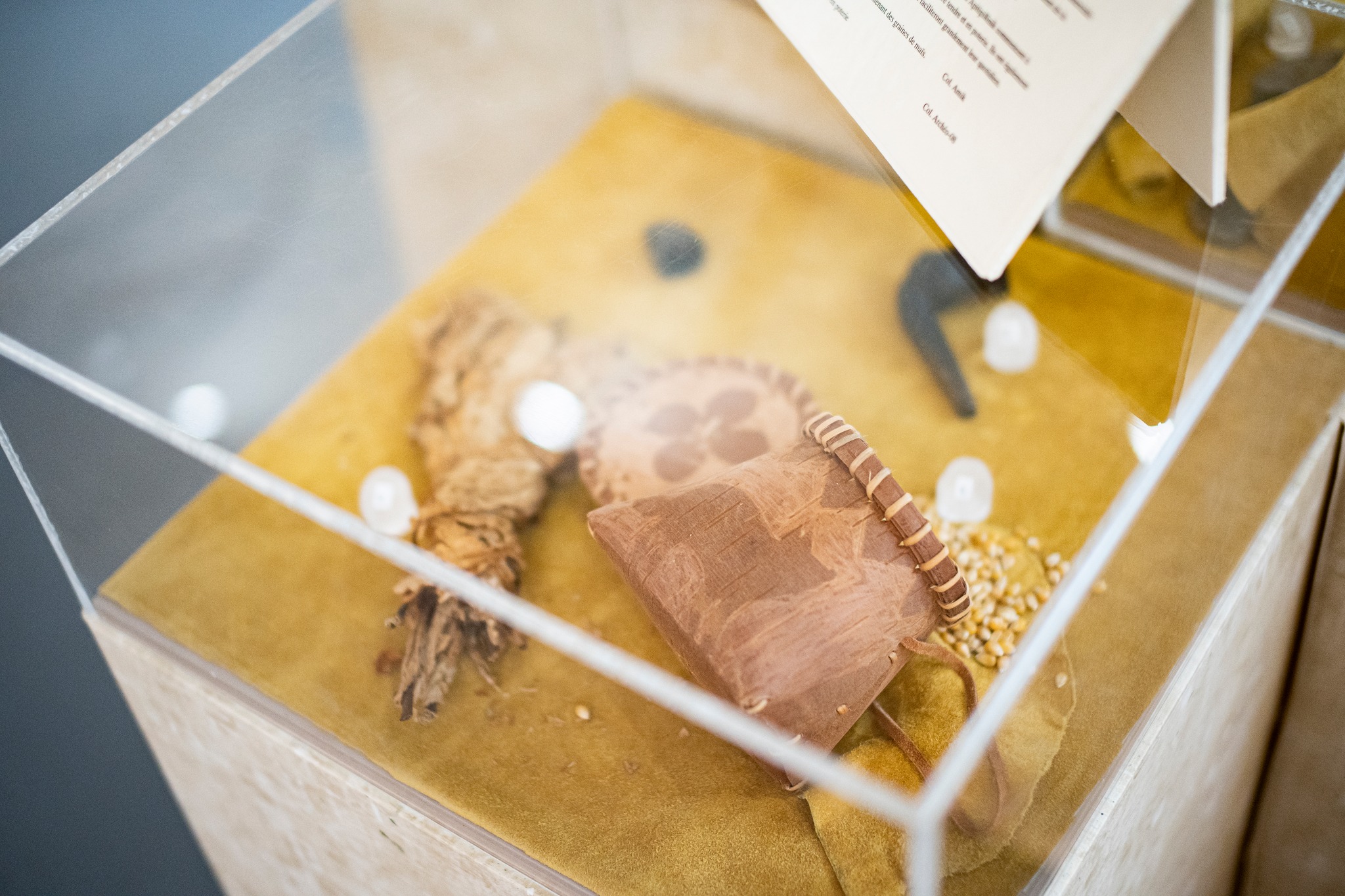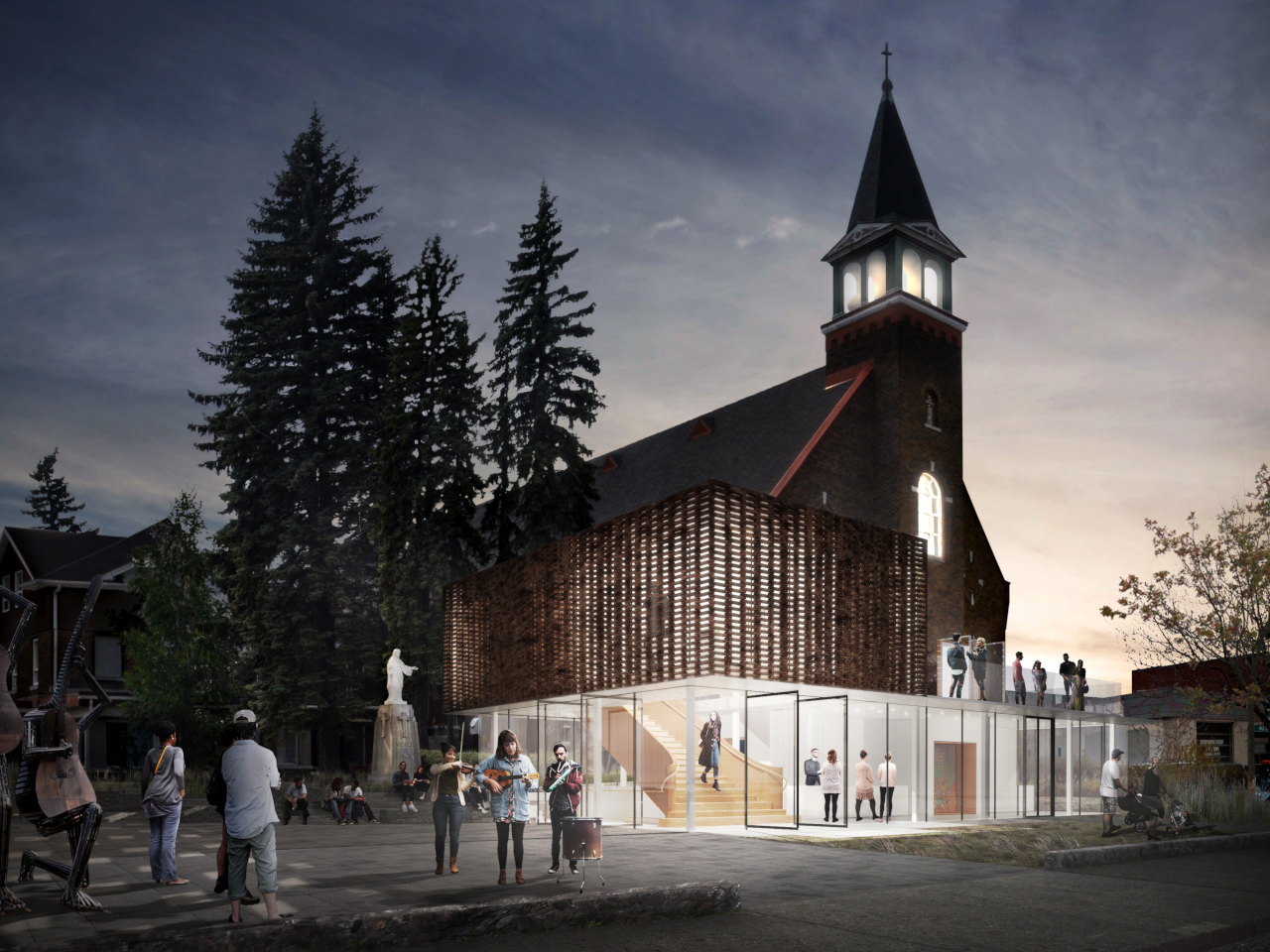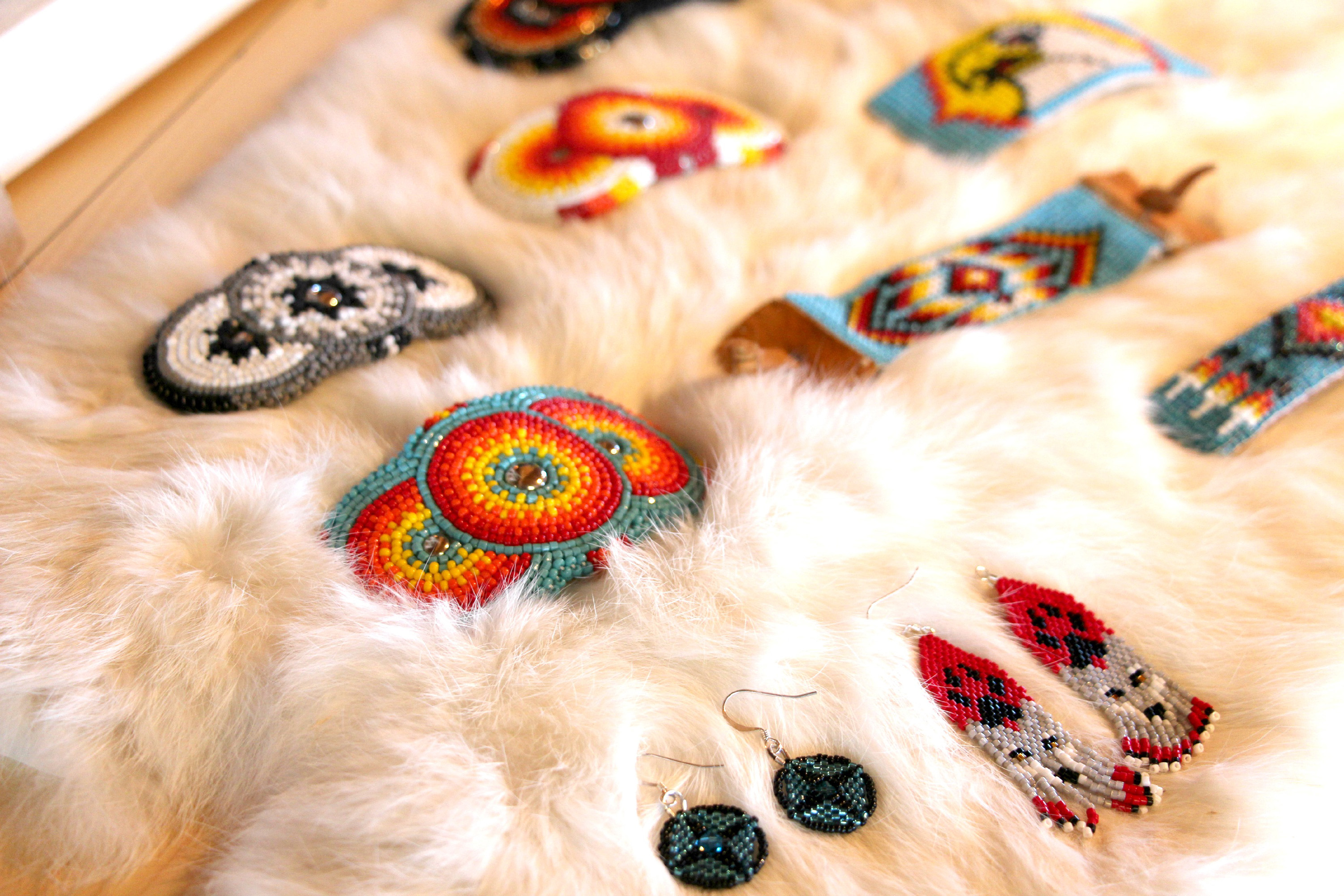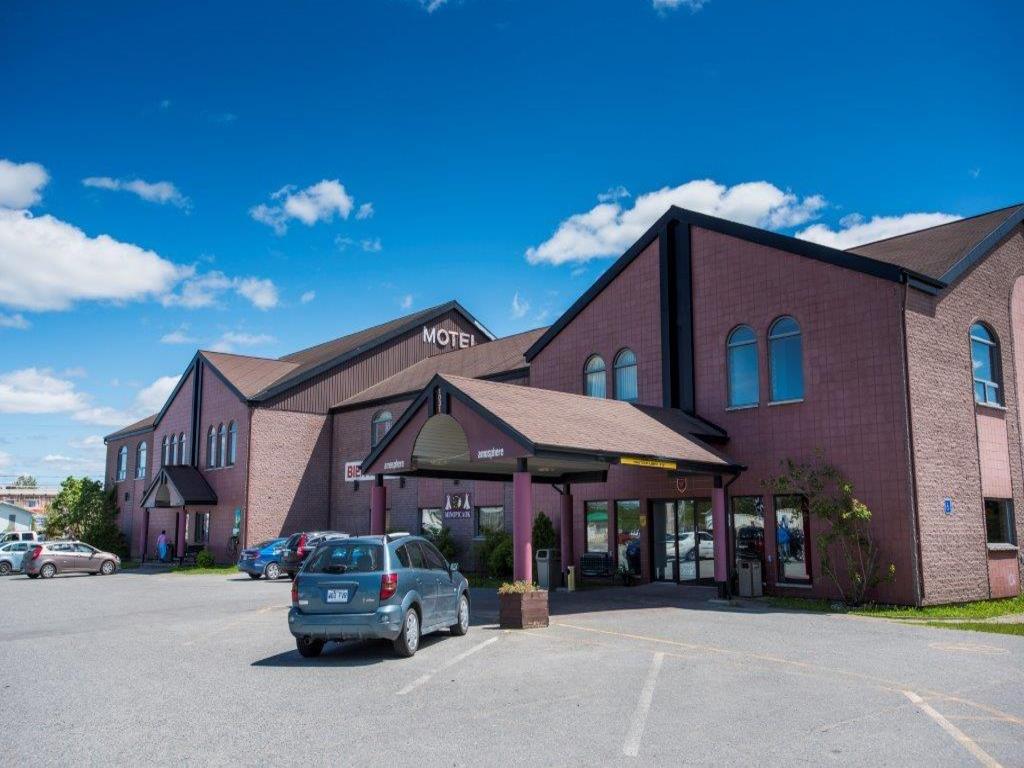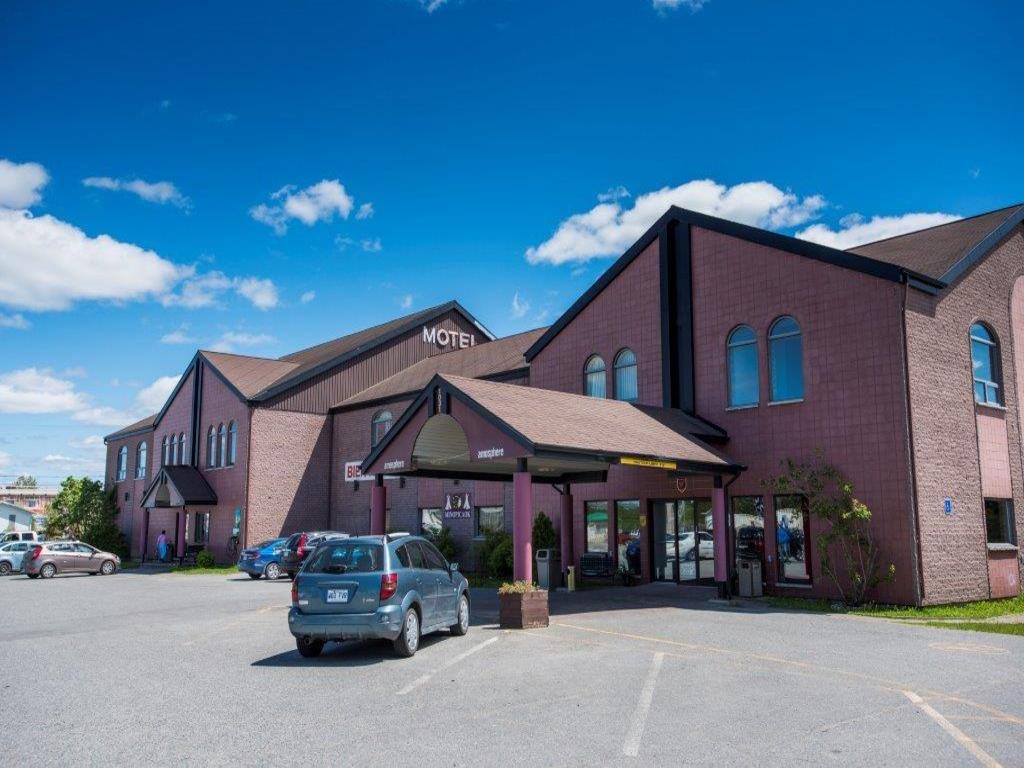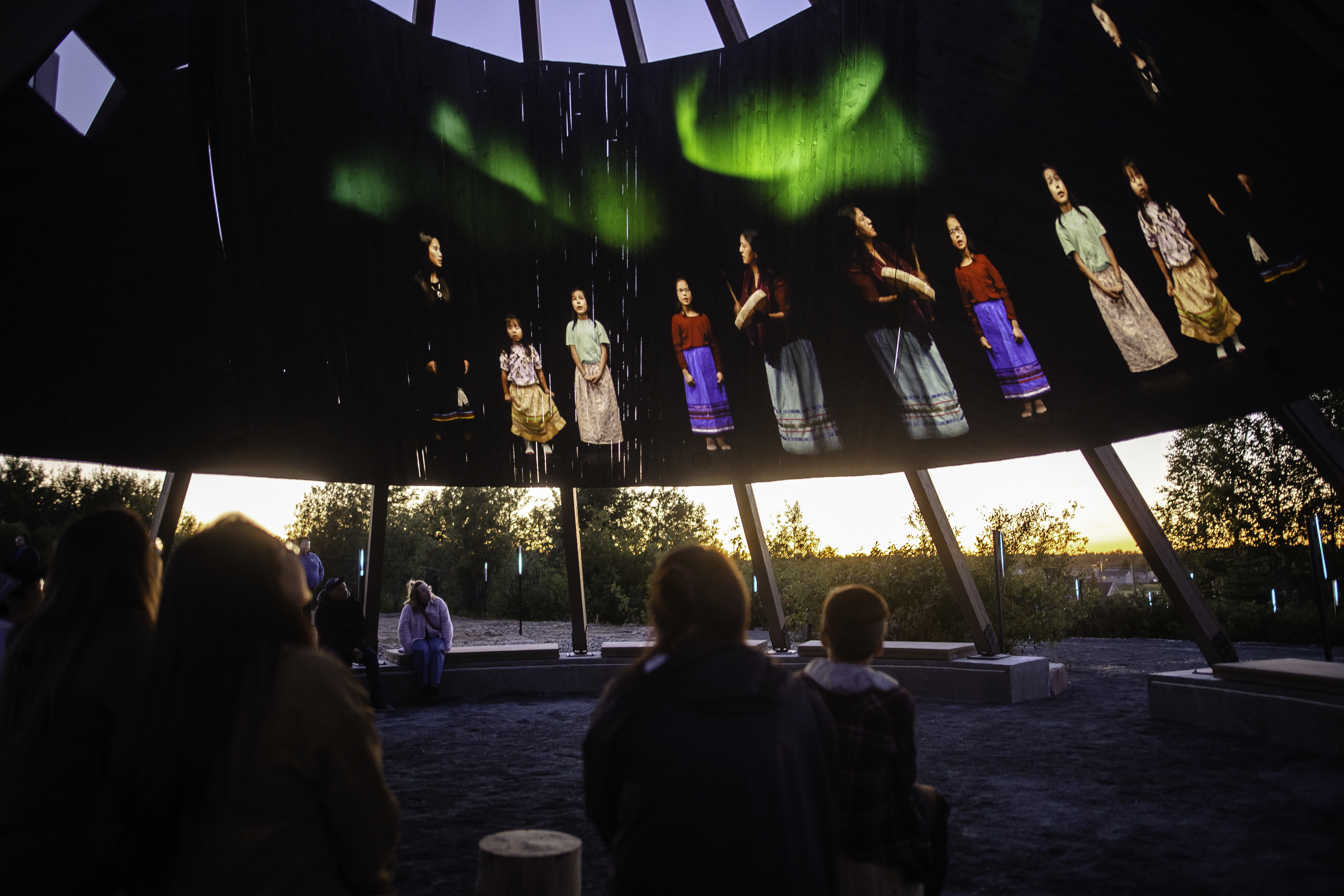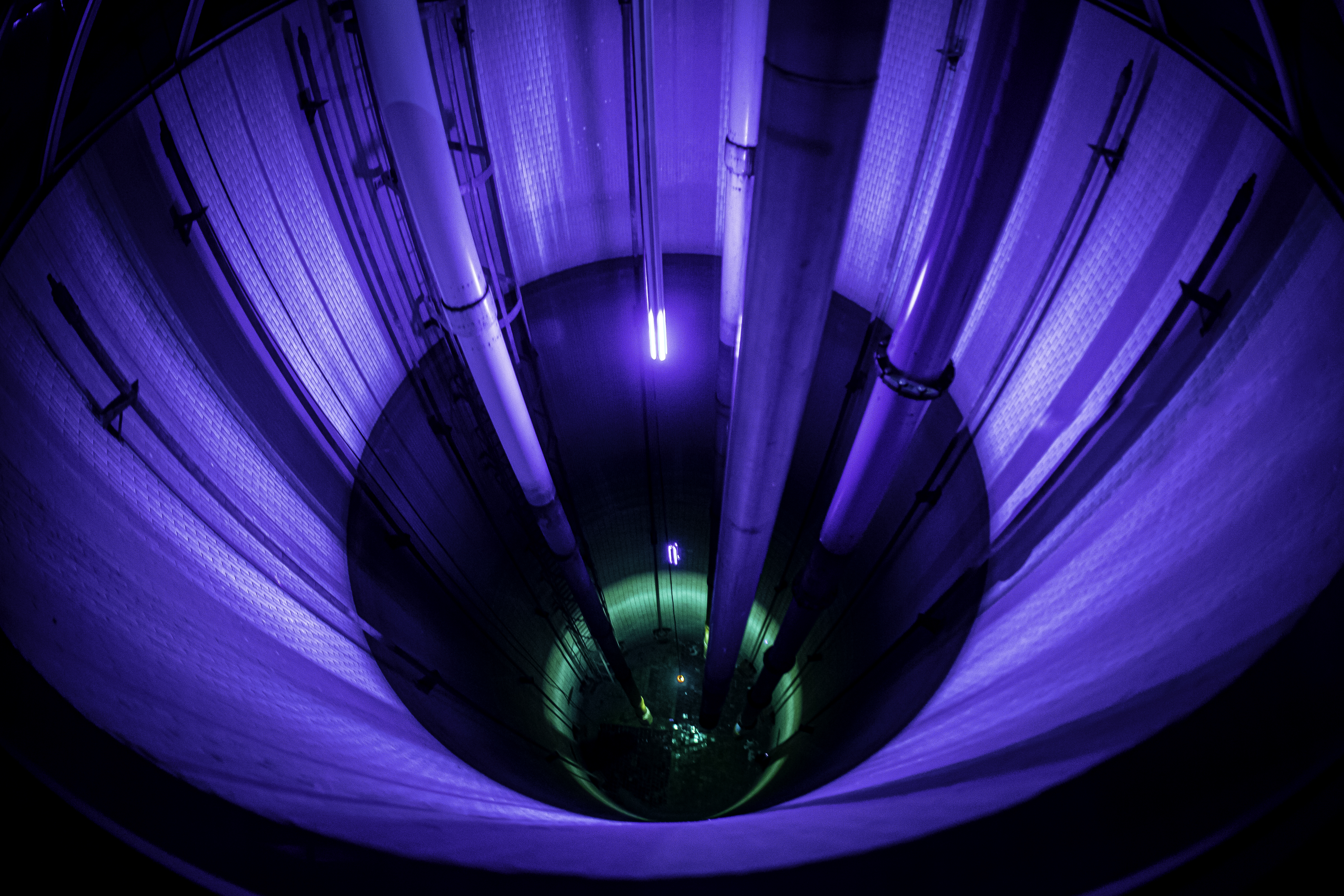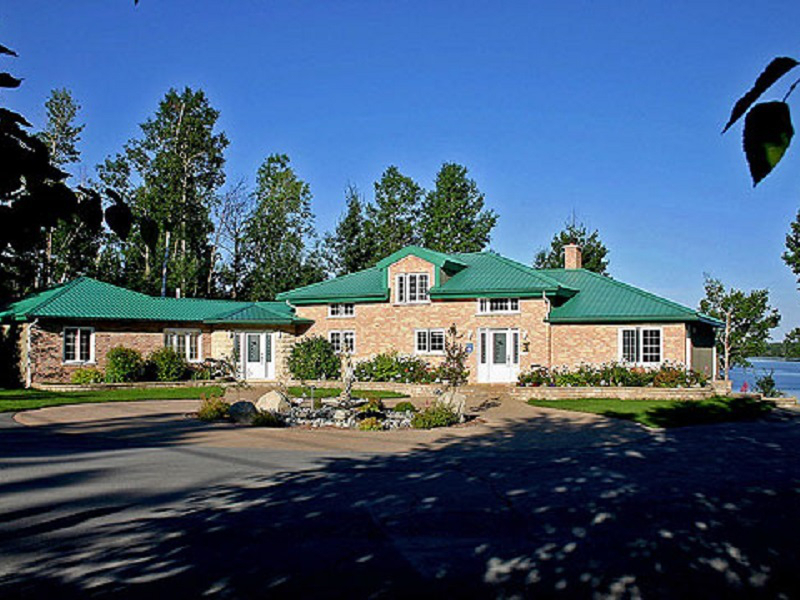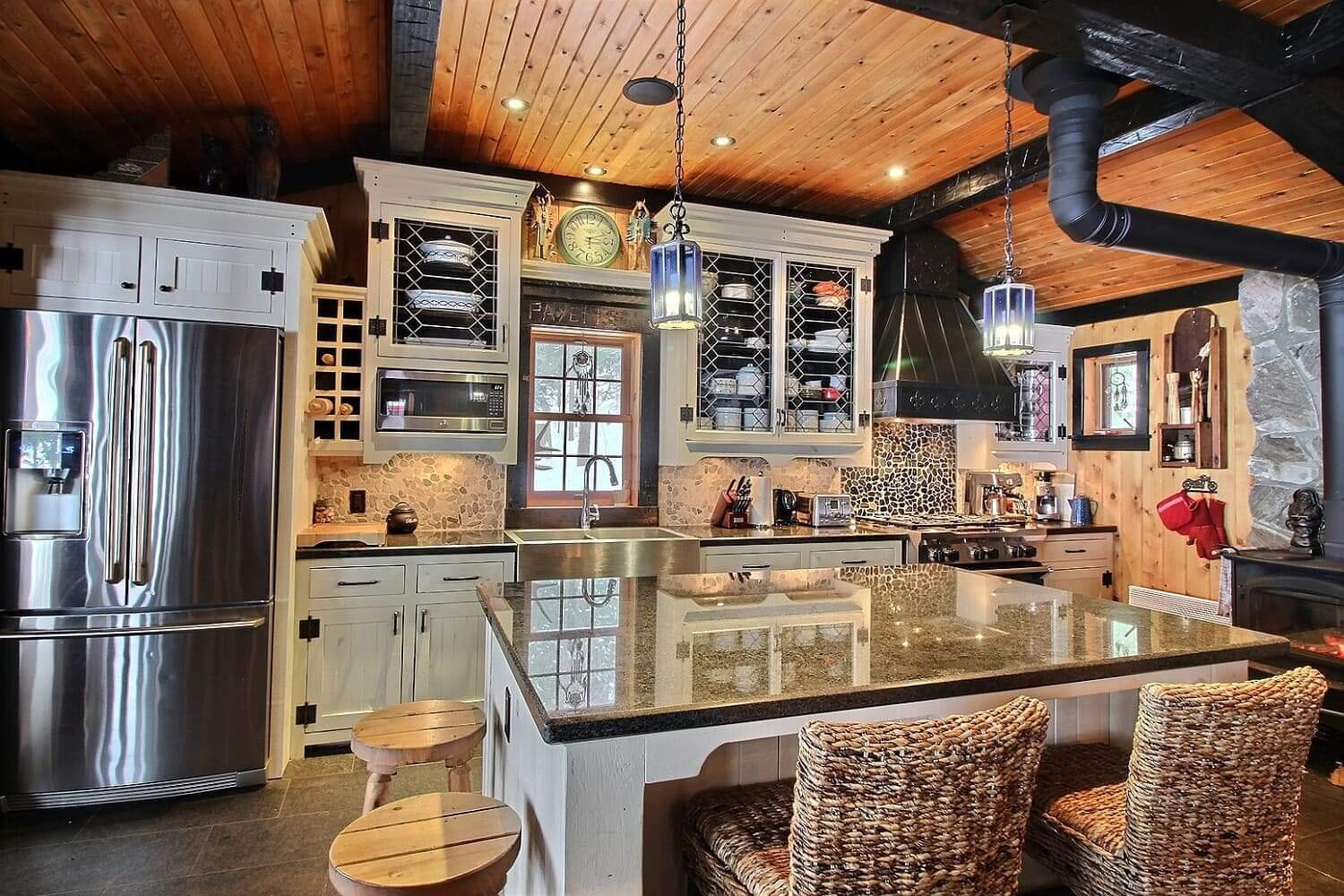A back country to discover
The Covered Bridges Route
Abitibi-Témiscamingue is still home to thirteen covered bridges. These structures proved very useful during the years of settlement. The purpose of covering the bridges was to protect the structure from bad weather. In addition to being called “settlement bridges”, covered bridges were also referred to as “kissing bridges”. Legends were often associated with them.
Covered bridges were a place where villages held public meetings and auctions and were used as notice boards; they also kept young lovers shielded from curious gazes.
Explore our back country and discover many architectural gems.
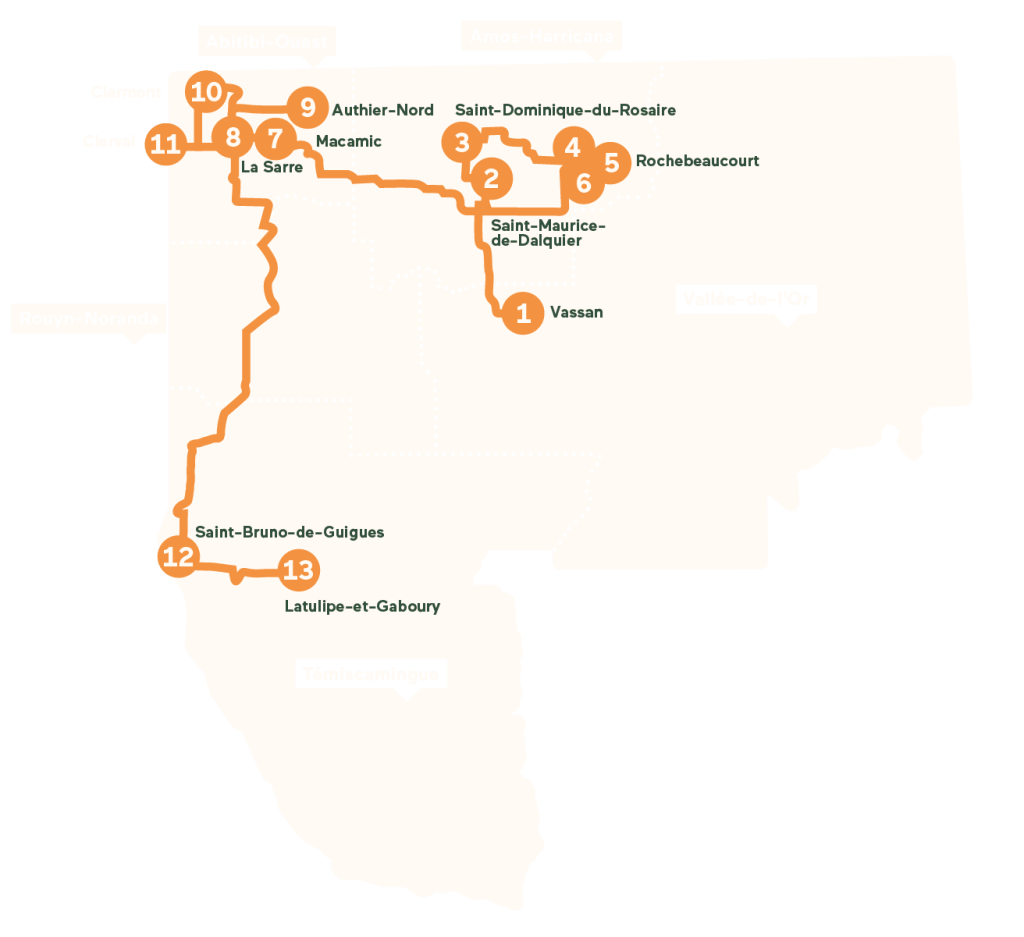
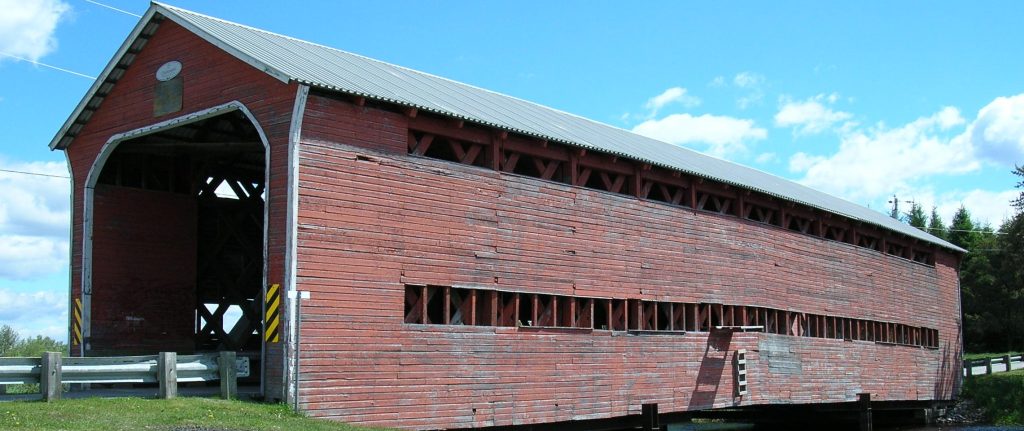
 Vassan
Vassan
Pont Champagne
Built in 1941, this bridge spans the Vassan River. It is named after one of the first pioneers of the area, Hervé Champagne. Key characteristics of this structure include unusual side openings, a nonstandard deck width (5.38 m), a 4.72-m vertical clearance, arched porticos, and corbelled drips.

 Saint-Maurice-de-Dalquier
Saint-Maurice-de-Dalquier
Pont Émery-Sicard
This bridge, built in 1950, is located on chemin Lavoie Ouest. Spanning the Davy River, it is one of the province’s most recent covered bridges. The beams are jointed together by four nails rather than the usual set of five.
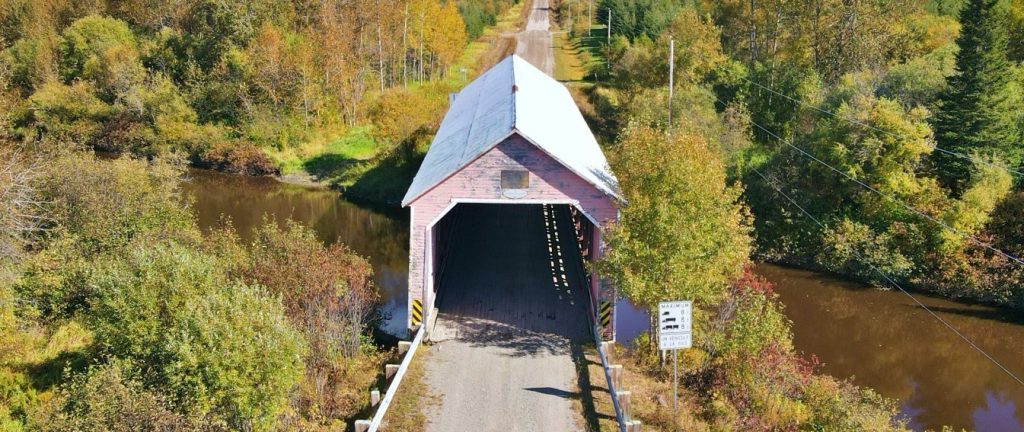
 Saint-Dominique-du-Rosaire
Saint-Dominique-du-Rosaire
Pont Alphonse-Normandin
Located on Chemin Rivest, this covered bridge was built in 1946 after a fire destroyed the first bridge. It is named after a resident who owned a sawmill nearby and who prepared the wood used in its construction. Its span is over 78 metres, and it overlooks the Harricana River.
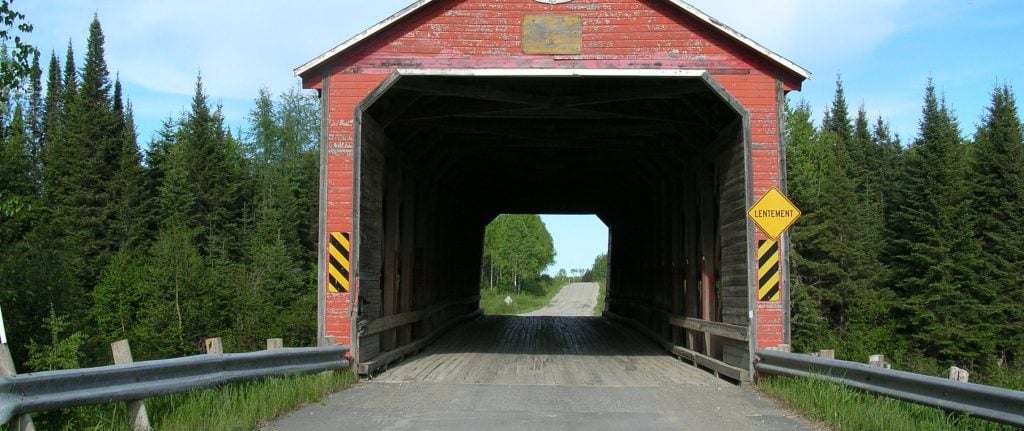
 Rochebeaucourt
Rochebeaucourt
Pont de l’Orignal
Built in 1942, this covered bridge is located in Rochebaucourt. The name refers to the frequent presence of moose in the area. Originally, the bridge had arched porticos, but the structure was modified in 2002 due to damage caused by flood waters.
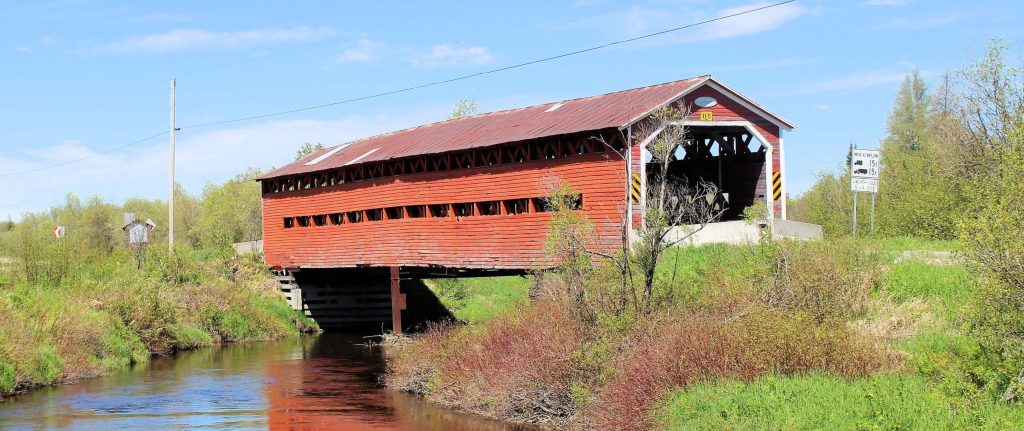
 Rochebeaucourt
Rochebeaucourt
Pont de l’Arche-de-Noé
Built in 1937, this bridge crosses Tourville Creek (RR 5 and 6). Its name (French for Noah’s Arch) refers to the fact that it was carried away on several occasions by spring flood. One characteristic feature of this bridge is the gentle pitch of the roof.
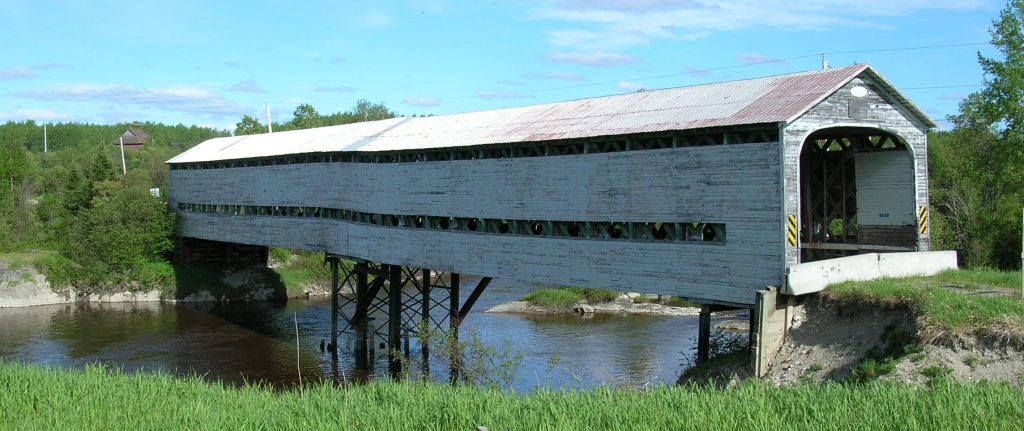
 Rochebeaucourt
Rochebeaucourt
Pont des Chutes
Built in 1954, the Pont des Chutes, 63.7 m long, is the second largest covered bridge in Abitibi. Spanning the Laflamme River, the bridge has beautiful arched porticos, which are increasingly rare.
-aspect-ratio-608-256.jpg)
 Macamic
Macamic
Pont Molesworth
This bridge was built in 1930 on the road between RR 2 and 3; it spans the Loïs River, which was originally named “Molesworth”. In the early 1950s, a central pillar was added to the bridge to increase its load-bearing capacity. The side openings were modified; they now have an arrowhead shape.
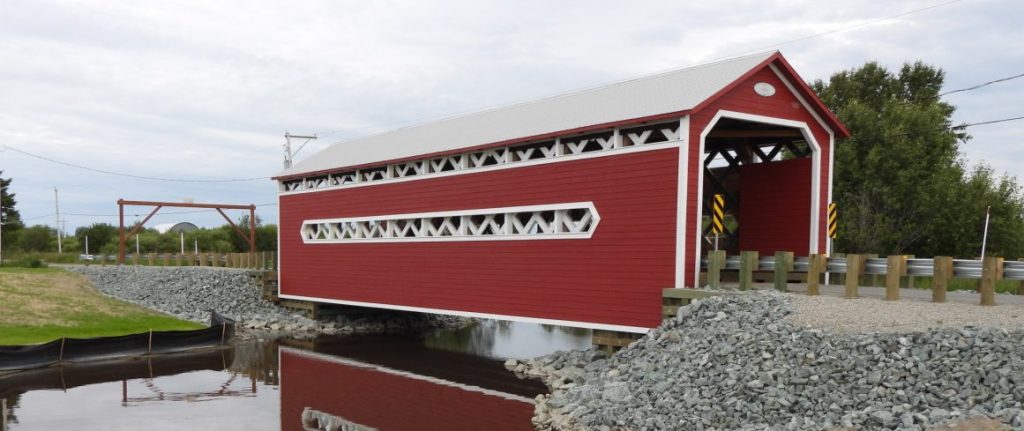
 La Sarre
La Sarre
Pont Leclerc
Built in 1927, this bridge spans the Bouchard River. It is named after a pioneer family of La Sarre. Its main characteristic – other than the fact that it is one of the oldest covered bridges in the region – is the addition of the ornamental elements to the side openings. During summer 2021, the bridge was temporarily moved, then re-installed on new planking to ensure its preservation. Thanks to those modifications, the Pont Leclerc became the first covered bridge in the province without a load limit.
-aspect-ratio-608-256.jpg)
 Authier-Nord
Authier-Nord
Pont Levasseur
This bridge is located on the road between RR 8 and 9 in Authier-Nord. It was built in 1928 and spans the Macamic River. It was named after the Levasseur family, who lived close by. Its main characteristics are a steep-pitch roof (35 degrees +) and arrowhead-shaped side openings.
-aspect-ratio-608-256.jpg)
 Clermont
Clermont
Pont du Petit-Quatre
Built in 1950, this bridge spans the Des Méloizes River. Over the years, it was painted in many different colors, but has been red since the 80s. As opposed to other covered bridges, this one has one row of windows; there are no other bridges in the region with this type of side openings.
-aspect-ratio-608-256.jpg)
 Clerval
Clerval
Pont de l’Île
The only covered bridge in Quebec that links an island to the mainland is located on Nepawa Island. This bridge spans Lake Abitibi. Construction of the bridge started in 1945 and ended in 1946. The first families living on Nepawa Island originated from Îles-de-la-Madeleine. This bridge is located in an area with a high archaeological potential; artifacts were found in close proximity.
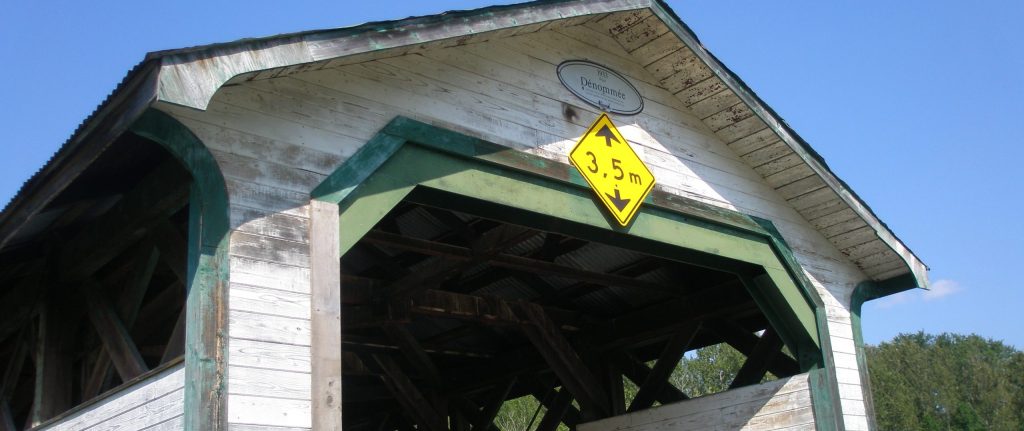
 Saint-Bruno-de-Guigues
Saint-Bruno-de-Guigues
Pont Dénommée
Named in memory of a pioneer, Albert Dénommée, this bridge was built in 1933, and was extended 10 m in 1950. The ornamental elements skirting the roof are one of its remarkable features. Other characteristics include corbelled drips and a low-pitched roof (up to 25 degrees); this is not frequently seen in the region.
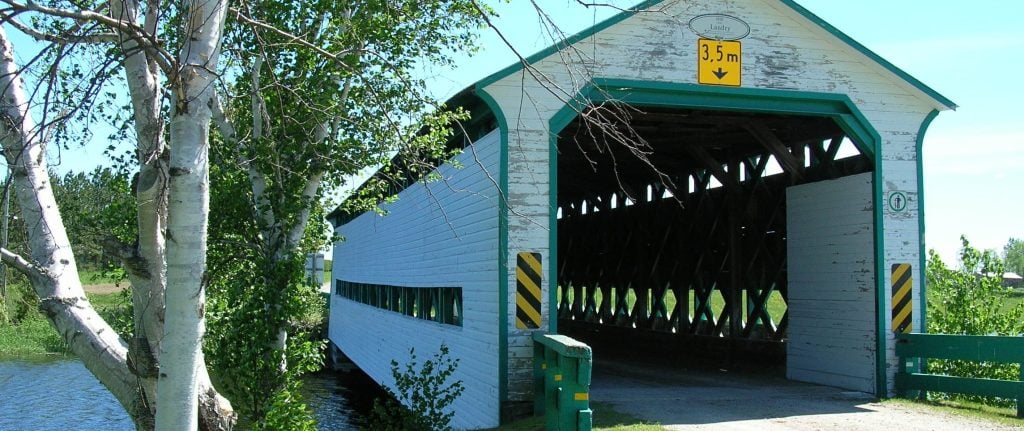
 Latulipe-et-Gaboury
Latulipe-et-Gaboury
Pont Landry
This bridge, built in 1932 and named in memory of two Landry families, was restored in the spring of 2000 for the municipality’s 100th anniversary. Steel jigs were secured to the corbelled drips. While this bridge is fairly old, it has undergone little change over the years. Initially dark in color, it has been white since the 70s.
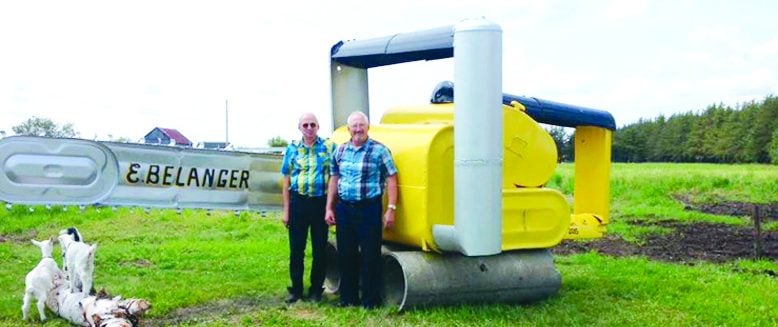
La Route du patrimoine forestier
The municipality of Chazel, proud of its founding fathers and heritage, invites you to follow the “Route du Patrimoine Forestier” to learn about historical facts that have forged its identity. Culture and history buffs won’t be disappointed!
Learn moreSources :
Évaluation patrimoniale des ponts couverts en Abitibi-Témiscamingue et au Nord-Du Québec, ministère des Transports du Québec, february 2009.
Website : Les ponts couverts au Québec, Pascal Conner
Plan your stay
in Abitibi-Témiscamingue
Subscribe to our newsletters!
Don’t miss any of our suggestions, let them come to you directly by subscribing to our newsletters.
Questions about your next
tourist stay?
Need support to
settle here?






